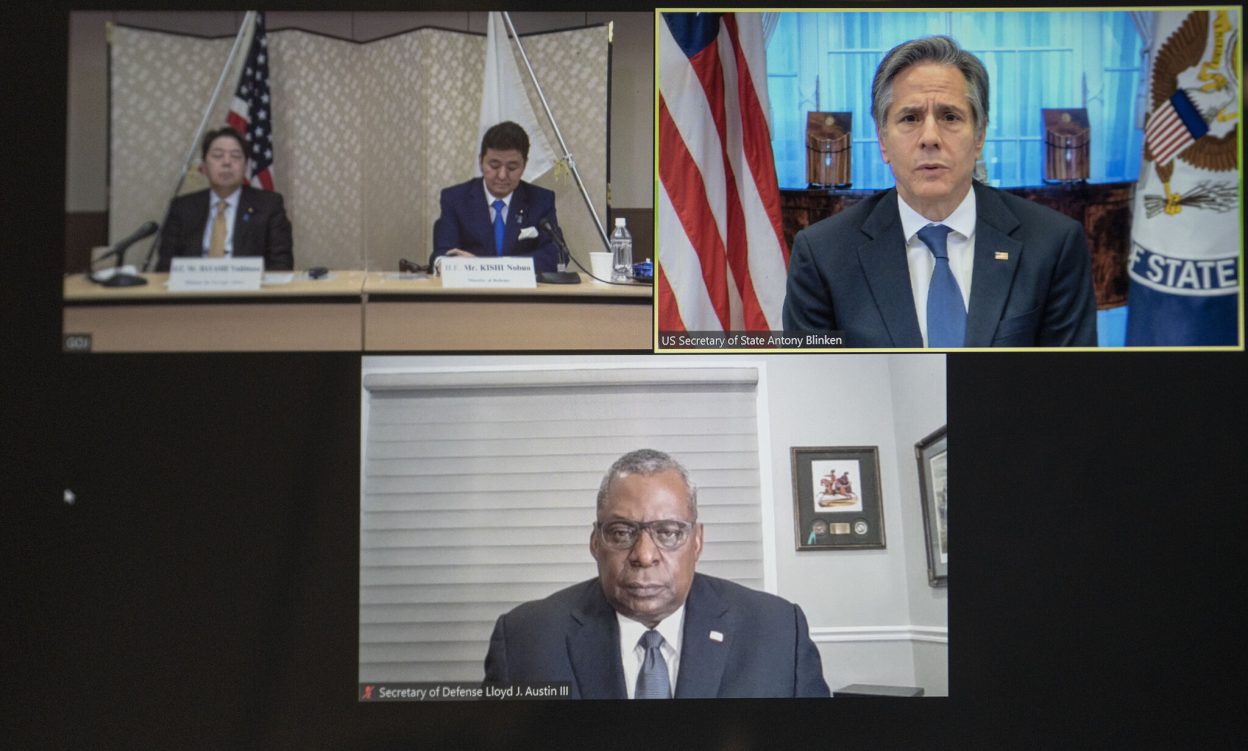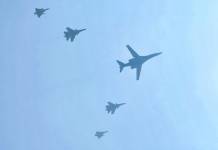Japan’s upper house on Friday gave the nod to spend over $8 billion to host US soldiers. The move highlights a growing emphasis on military integration, coordinated response and deterrence in the face of increased threats from China, North Korea, and Russia.
The estimated yearly expenditures of $1.7 billion will be around $81 million higher than the fiscal 2021 budget. The funds would be used to cover compensation for Japanese staff and electricity expenses of US facilities. The costs of relocating American training exercises will also be covered by Japan.
While negotiations on a new budget plan began in 2020, Tokyo and Washington agreed to extend the previous agreement for a year, until fiscal 2021, as the date overlapped with the US presidential election.
The new agreement would also imply that the US-Japanese relationship has improved after it soured during Donald Trump’s presidency. Trump is said to have asked Japan to quadruple its budget for US military facilities in the nation to $8 billion per year, threatening to pull American soldiers out if Tokyo declined.
According to Department of Defense data, the United States has around 56,000 active-duty service members in Japan, significantly more than any other country and far more than the 35,000 or so in Germany. Japan covered 74% of its hosting costs in 2002, as per a Pentagon report from 2004. South Korea accounted for 40% of the total, while Germany accounted for 32%.

What Is Covered In The Budget?
The $8.6 billion budget for host nation support also supports the acquisition of advanced weapons for joint military exercises. In addition, a new funding category of up to $164 million is included in the next five-year budget for the purchase of advanced virtual combat training systems.
Previously, Japan described this fund as “Kindness.” However, rather than being viewed as “kindness,” Japan’s government now views the host-nation support fund as ‘necessary’ for strengthening the alliance, The Associated Press reported.

The sum set aside for commodities like energy, gasoline, and water costs at US installations will be gradually reduced, according to prior reports, due to domestic criticism in Japan. In recent years, public outcry has erupted in Japan over expenditure on golf courses and bowling alleys, as well as the implications of the substantial American army deployment.
Given the necessity to strengthen the long-standing security cooperation, the Japanese administration is thought to have concluded that some increase was inevitable. This is also crucial since US soldiers in the region are mobilizing their most powerful gear to counter China’s fast military buildup.
Japan’s Rising Defense Budget amid threats
The agreement came at a pivotal juncture for the US-Japanese military partnership amid increasing threats from Pyongyang and Beijing. On Friday, North Korea posted dramatic footage of its most recent intercontinental ballistic missile test, the 12th of the year.
The US’ long-standing relationship with Japan is seen as particularly important in resisting China’s ambitions, whether militarily or economically in the region and around the world. In recent years, Japan has also been focusing on strengthening its defenses.
On December 24 of last year, Japanese Prime Minister Kishida Fumio approved $47.2 billion in defense spending for the fiscal year 2022, which begins in April. This was another record figure for the eighth year in a row in the history of Japan’s national defense budget. It also included realignment-related expenses allotted for mitigating effects on local populations.

The budget plan also demonstrates Kishida’s firm commitment to continuing the policies of his two predecessors, Abe Shinzo and Suga Yoshihide, of adopting a greater role in the Sea of Japan, East China Sea, South China Sea, and the wider Western Pacific and Indo-Pacific theater.
China’s mouthpiece, the Global Times, had slammed Kishida last December, accusing him of adopting salami-slicing tactics to carve up Japan’s pacifist constitution. “The Japanese government has been carving up its pacifist constitution with salami-slicing tactics.
In fact, Japan has made more bold breakthroughs and attempts in areas related to the military, security and defense, and especially in the positioning of its role in the US-Japan military alliance.”
“Tentative claims such as boosting the ability to attack enemy bases are part of Japan’s post-WWII, particularly post-Cold War, efforts to get rid of the limits set by the pacifist constitution,” it added.
- Contact the author at ashishmichel@gmail.com
- Follow EurAsian Times on Google News




